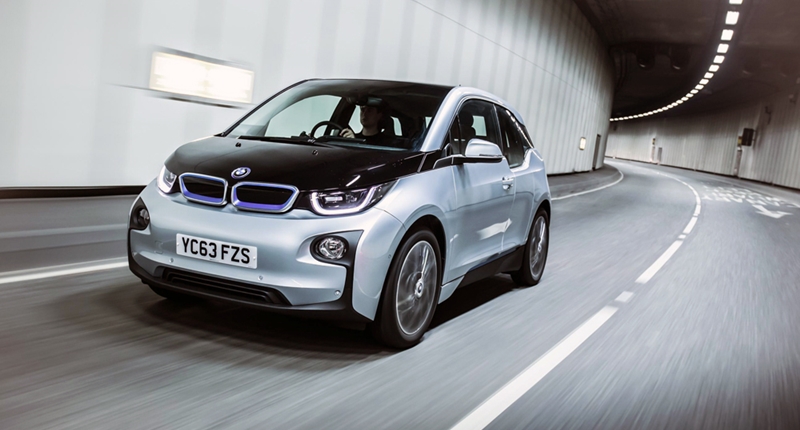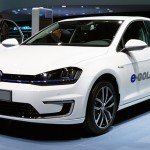MTN South Africa has once again emerged as the country’s top-performing mobile network, securing the highest score in the Q2 2025 MyBroadband Network Quality…
5 cars that redefined the term ‘geeky’ in 2013
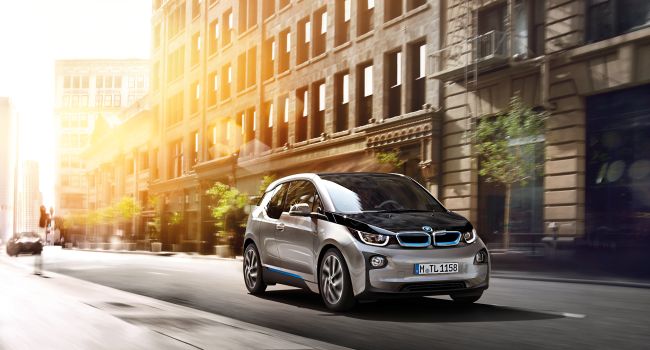
2013 saw its fair share of technologically advanced cars revealed and launched. Electric and hybrid cars were a major theme, marking out the mass movement of manufacturers to alternative energy vehicles.
More importantly though, the year saw a huge range of cars being unveiled which would make any geek weak at the knees.
Some were just concepts meant to amaze, like Mercedes’ AMG Vision Gran Turismo, others were there to show off just one new and amazing technology like the Volvo self-parking car and others to show what is coming along in a few years’ time, like the Bentley EXP 9.
There was yet another range of geek-friendly cars that emerged – those that went on sale and were on the road in 2013.
These were the cars that showed that, to use a tired expression, the future is now.
These are the five geekiest cars of 2013.
1. McLaren P1
Why the McLaren P1 and not LaFerrari or the Porsche 918 Spyder? Simple. The rules for this list declared that a customer car must have been delivered within 2013, and the McLaren P1 is the only one of the three new hyper-cars to have achieved that.
So what makes this car so geek-worthy? It’s a full geek experience. The engineering under the skin is true next-generation stuff, but with attention to detail to gain every possible performance advantage out of it. The weight-saving, the aerodynamics and the electronic safety and performance aids all add up to make this one of the geekiest cars ever, never mind of 2013.
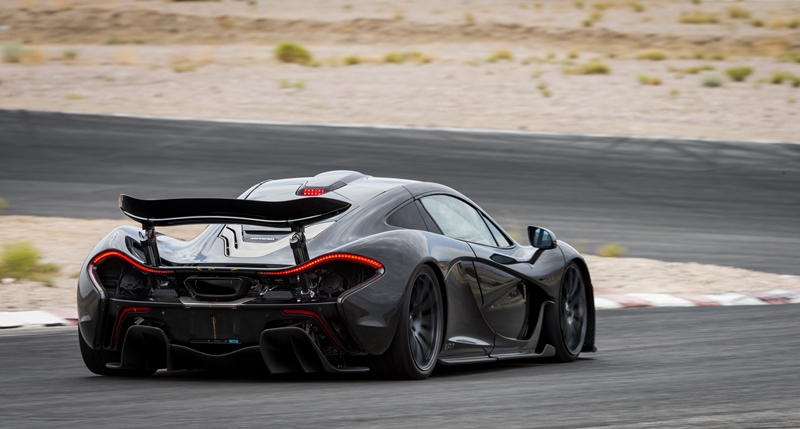
First off, the power plant. You’ll note I said power plant and not engine – the P1 has an engine, but it is complimented by a few other systems which make it as fast as it is. The base of the system is a twin-turbocharged 3,8l V8 petrol engine producing 542kW. It’s a lot, but certainly not unheard of. It’s the next 132kW that makes this car’s performance so astonishing. Aiding the petrol engine is an electric motor, driven by a high-density lithium-ion battery that takes its final power output to a face-twisting 674kW. On electric power alone, the P1 can travel a distance of up to 10km, and the electric motor will propel it to up to 160km/h.
Combine these two engines, and the P1 will accelerate from 0-100km/h in 2.8, 0-200km/h in 6.8 seconds and on to a limited top speed of 350km/h. There are, however, reports that McLaren test drivers have taken the P1 up to 385km/h!
The batteries on the P1 are recharged by either the engine, plug-in equipment to a wall socket or via the Instant Power Assist System (IPAS). A technology transplanted straight from Formula 1, IPAS allows the engine to recover some of the energy lost as heat while braking to help recharge the batteries. McLarens’ technology team say this can aid the electric motors full 132kW output for a few seconds.
The rest of the car is just as technological, but takes attention to detail to an almost obsessive level. The windscreen is just 3,2mm thick – 1mm thinner than the 12Cs – giving a weight saving of 3.5kg. The carbon fibre inside the cabin has 1 layer less than the rest of the car, saving another 15kgs. The aerodynamics on the P1 are so advanced, the car changes itself as the speed changes to aid safety and preserve itself. For example, with the rear-wing extended, the bodywork on the P1 generates 600kgs of downforce up to a speed of 255km/h, at which point it needs to shift to help bleed off some of the extra downforce. If the wing stayed in its primary position, the P1s bodywork would generate 1000kgs of downforce at its 350km/h top speed, requiring the suspension to be reinforced.
I could happily continue detailing the geeky facts & figures of the P1, but we must move on the 2nd geekiest car of 2013.
2. The 2014 Mercedes-Benz S-Class
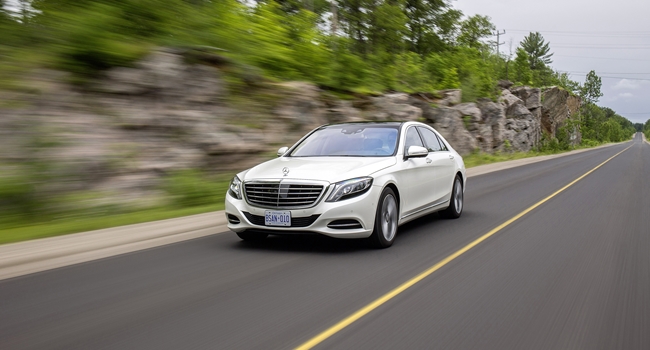
Traditionally hailed as a landmark in what is technologically possible in a car, when the engineers developed the 2013 S-Class, they made all others vehicles look like they were built by George Stephenson or Fredrick the Great.
As fellow Motorburn writer Luke Preston mentioned a few weeks ago, the S-Class shines best when you focus on the safety technologies at work. At the core of this safety technology is the Mercedes-Benz PRE-SAFE® system, which is designed and engineered so that the car will detect and avoid an incident before the driver is even aware that there is a risk.
The technology has slowly been filtering into S-Class models for years. First there was radar-guided cruise control, only now making its way into other luxury cars, but appeared on the 2002 S-Class. Night vision equipped cameras with dashboard display first appeared on the 2006 S-Class and now, the 2014 S-Class has taken the idea of preventative safety to a completely new level.
To protect its occupants, the S-Class monitors a range of 60 driver-specific parameters including heart rate, point of vision, blink rate and so on. Then there’s Lane Keep Assist, a system we’ve seen on other cars too, which helps nudge the vehicle into its lane should the driver lose focusing.
A new feature is the active braking system. When the driver presses the brake pedal, the car will determine, based on how forcefully the driver stood on the pedal, what level of braking is needed to bring the car to a safe stop, avoiding collisions with other cars if possible
These features are, however, all for the S-Class’s own safety. Where the new generation comes into its own is the ability to avoid other road users. Watch the video below to see how the radar-guided collision avoidance helps keep the S-Class and pedestrians safe:
The same system helps the S-Class avoid other vehicles when maneuvering in parking lots and low-speed areas (such as in towns or at robots). If the S-Class detects an upcoming collision, it will automatically come to a halt or beep to warn to driver to steer around an upcoming hazard.
The hope with the S-Class is that these technologies will become more mainstream and filter down to more affordable cars. The S-Class was the first production vehicle to feature ABS brakes, crumple-zone technology and inertia reel seatbelts. So, at some point between 2020 and 2030, we should see PRE-SAFE® on our humdrum hatchbacks.
3. BMW i3
The i3 is rather exciting. Technologically, the i3 is nothing totally Earth-shatteringly new. It’s a small electric car that runs off power stored in batteries and charged by plugging your car into the wall. What makes the i3 rather exciting is that it reflects a mass-manufacturing commitment to electric-vehicles and making something people might want to buy. Previous electric cars have been from small shed-based companies (remember the Joule?) or experimental prototypes. In the last two years, we’ve seen some other large manufactures introduce electric cars (more on this later), but the BMW i3 has two distinct differences.
First off, when BMW designs a car, it ensures it has all the comforts a modern luxury brand owning motorist could want. Climate control and electric windows are the start of a long list of gadgets that BMW has chosen to put into its battery-powered car. Rather than opting for a cheap interior, the i3 is BMW remixed for the 21st century. The classic small, thick steering wheel is there, complimenting all the glass and space to make it feel like a truly futuristic car that is available today. BMW knows its customers and has built a car with mass appeal, hopping to get people out of polluting monster-vehicles and into something just as comfortable and stylish, but with an eco-friendly touch.
Secondly, the mass appeal BMW are looking for with the i3 determined it be designed as a global vehicle. Not for a few small, experimental markets – BMW fully intended bringing electric power to your streets.
That mass-appeal means that, hopefully, people will start buying more electric cars. With more electric cars, we should start seeing the emergence of electric-car infrastructure in our cities.
By planning to roll out the i3 to North America, Asia, Europe and, South Africa, the i3 is showing that large brands see value in developing and selling electric vehicles.
4. Nissan LEAF
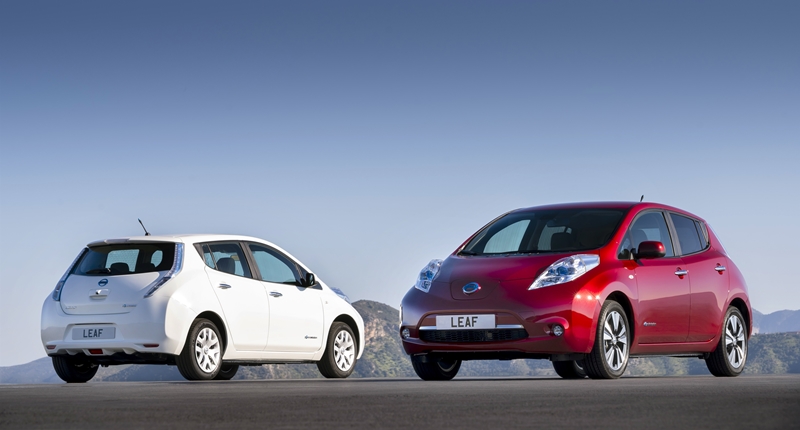
The Nissan LEAF (Leading, Environmentally friendly, Affordable, Family car) has been around in Europe and North America since 2011, but it only arrived in some markets in late 2013.
Powered by an 80kW electric motor with a range of 195km and a total charge time of 7 hours, the LEAF is the first all-electric car to be sold in South Africa, the most high-profile market to get the LEAF in 2013.
There may be many worries about the country’s power grid (we’ll ignore the irony that the national power utility bought the entire first LEAF shipment) and the cost is rather high, but the LEAF shows the world is moving away from the traditional internal combustion engine to the propulsion of the future.
There may be kinks to work out on the infrastructure side, but I’ve been told the LEAF drives just like a normal car, with air-con, CD/MP3 player and cup-holders. The only difference is the charging method. The LEAF is a pure plugin vehicle, designed to never be fitted with an internal combustion engine and to be run purely with power from the wall. It’s the first of its kind in South Africa, to be followed by the i3 in 2014 and rumours of other manufacturers considering introducing more all-electric cars to our market in the near future.
5. Tesla Model S

The brainchild of Elon Musk, Tesla manufactures all-electric cars. Not electric vehicles like the G-Wiz or golf carts, but fully road-legal cars.
2013 saw it introduce the Tesla Model S, a 5-door luxury hatchback with the same sort of sticker price and range (480km) you would find on a mid-range BMW 5-Series.
It’s this familiarity that makes the Tesla Model S so geek worthy. Where the BMW i3 has shown that large manufacturers are taking electric vehicles seriously, Tesla is showing that electric vehicles are just like the cars we know and love, with lots of comfort and space in a good-looking package.
Tesla have shown that all this technology can become mainstream. Tesla may sell almost all of its cars in North America (A few made it to Europe), but the business has moved from a tech-startup to a legitimate player in the auto industry showing what may be coming in 10 to 15 years from large, established manufacturers.
In 2013, it introduced the Model S, a 5-door family hatchback powered entirely by electric motors — no petrol engine or booster pack assistance, just the on-board batteries. As with all-electric cars, the Model S isn’t cheap. Prices start at $63 570 or as much as a well-equipped BMW 5-Series.
Nothing terribly geek-worthy yet, as we’ve seen above, electric cars are becoming more and more common and Tesla hopes its entire business and business model will become the norm for electric cars.
So those are five cars I thought were technologically significant in 2013, for a range of reasons. The P1 and S-Class have taken the current paradigm and shifted it so far that it feels like 2020 when you’re in them. The i3 and LEAF have taken technology that was the preserve of concept cars and experimental prototypes from just five years ago and applied to modern, consumer cars and Tesla have shown that electric car businesses can be viable.
Looking to 2014, we can see a few more developments, offhand the Porsche 918 Spyder and BMW i8 are due to arrive, helping push the technological envelope even further.
What cars and car-technology did you enjoy from 2013?

